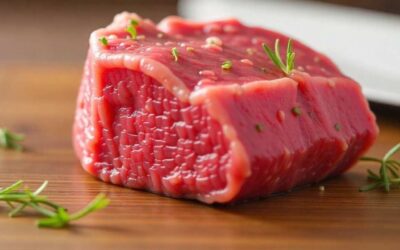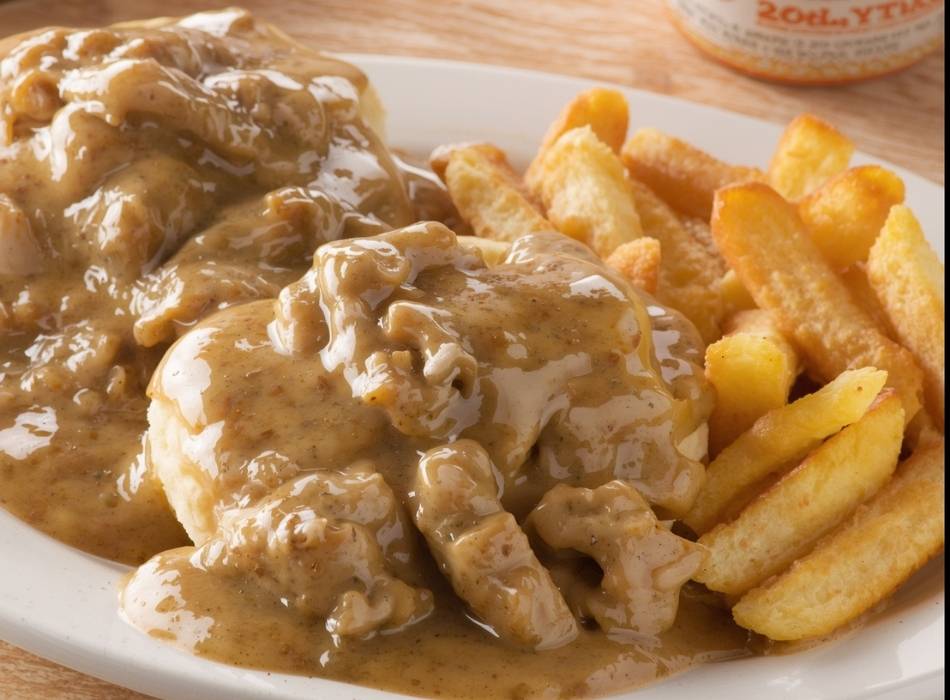Nothing says comfort food quite like a plate of buttery biscuits smothered in rich, creamy gravy. But if you’ve ever been to Popeyes Louisiana Kitchen, you know their gravy stands in a league of its own. That smooth, peppery sauce with hints of Cajun spice has customers coming back for more, and now you can recreate that same magic in your kitchen.
This homemade Popeye gravy recipe captures all the flavor complexity of the restaurant favorite while using simple ingredients you likely already have on hand. Whether you’re planning a weekend brunch, looking to elevate your fried chicken dinner, or simply craving that distinctive taste, this recipe delivers authentic results every time.
The secret lies in understanding the technique behind a proper roux and knowing which seasonings create that signature flavor profile. Get ready to transform your breakfast table with this restaurant-quality gravy that rivals the original.
What Makes Popeye Gravy Special?
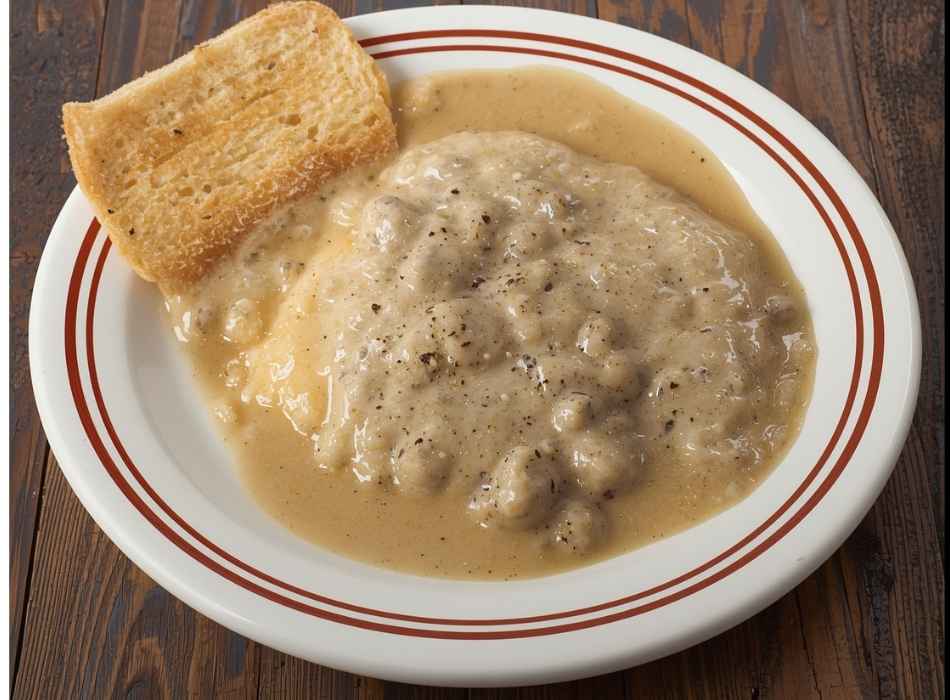
Popeye gravy isn’t your typical white gravy. The restaurant’s version has a unique flavor profile that sets it apart from standard sausage gravy or country gravy. The key differences include a smoother texture, a more pronounced black pepper kick, and subtle Cajun seasoning notes that give it depth without overwhelming heat.
The gravy also has a lighter consistency compared to many homemade versions, making it perfect for soaking into biscuits without being too thick or gummy. This balance comes from the proper ratio of fat to flour in the roux and careful attention to cooking times.
Another distinguishing feature is the absence of sausage chunks. While many Southern gravies rely on crumbled breakfast sausage for flavor, Popeye gravy gets its richness from rendered fat and strategic seasoning, creating a smooth sauce that coats evenly.
Essential Ingredients for Authentic Flavor
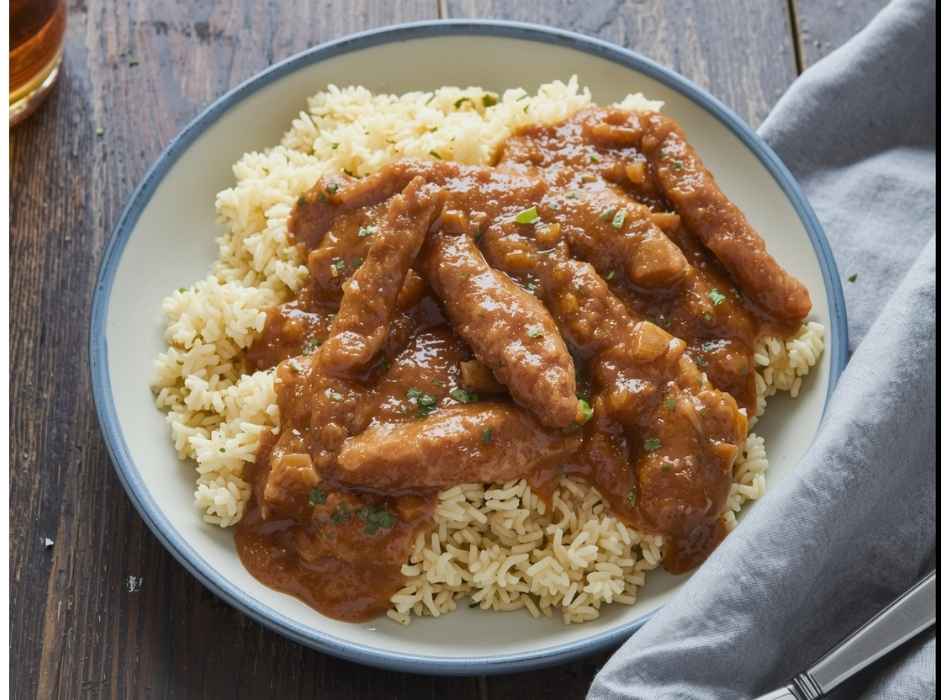
Creating restaurant-quality Popeye gravy starts with gathering the right ingredients. Most of these pantry staples work together to build layers of flavor that mimic the original.
For the base:
- 4 tablespoons all-purpose flour
- 4 tablespoons butter or vegetable oil
- 2 cups whole milk (room temperature works best)
- 1/2 cup chicken broth
For seasoning:
- 1 teaspoon freshly ground black pepper
- 1/2 teaspoon garlic powder
- 1/2 teaspoon onion powder
- 1/4 teaspoon paprika
- 1/4 teaspoon cayenne pepper
- 1 teaspoon salt (adjust to taste)
- 1/4 teaspoon dried thyme
The quality of your ingredients matters more than you might think. Freshly ground black pepper provides a sharper bite than pre-ground varieties, while whole milk creates the creamy richness that makes this gravy so appealing. Room temperature milk prevents shocking the roux and helps create a smoother final product.
Step-by-Step Cooking Instructions
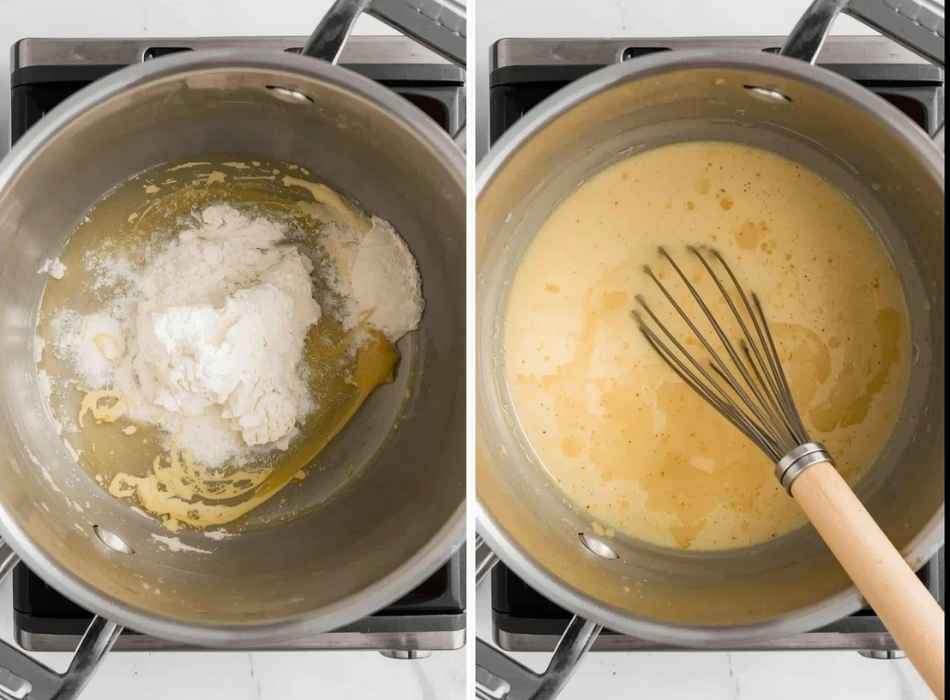
Making the Perfect Roux
Start by heating your butter or oil in a heavy-bottomed saucepan over medium heat. Once melted and hot, gradually whisk in the flour, stirring constantly to prevent lumps from forming. This mixture is your roux, and it’s the foundation of great gravy.
Cook the roux for 2-3 minutes, whisking continuously. You want it to bubble gently and develop a light golden color, but don’t let it brown too much. The goal is to cook out the raw flour taste while maintaining a light color that won’t darken your finished gravy.
Adding Liquid and Building Flavor
Slowly pour in the chicken broth while whisking vigorously. The mixture will bubble and thicken immediately. Once the broth is fully incorporated and smooth, begin adding the milk in a steady stream, whisking constantly to prevent lumps.
Continue cooking over medium heat, stirring frequently, until the gravy begins to thicken. This usually takes 5-7 minutes. The consistency should coat the back of a spoon but still flow easily when poured.
Seasoning to Perfection
Remove the saucepan from the heat and add your seasonings. Start with the salt, black pepper, garlic powder, and onion powder, whisking each addition until well distributed. Add the paprika, cayenne, and thyme last, as these can become bitter if cooked too long.
Taste and adjust seasonings as needed. The black pepper should be prominent but not overwhelming, and you should detect subtle warmth from the cayenne without intense heat. If the gravy seems too thick, whisk in additional milk one tablespoon at a time until you reach the desired consistency.
Pro Tips for Restaurant-Quality Results
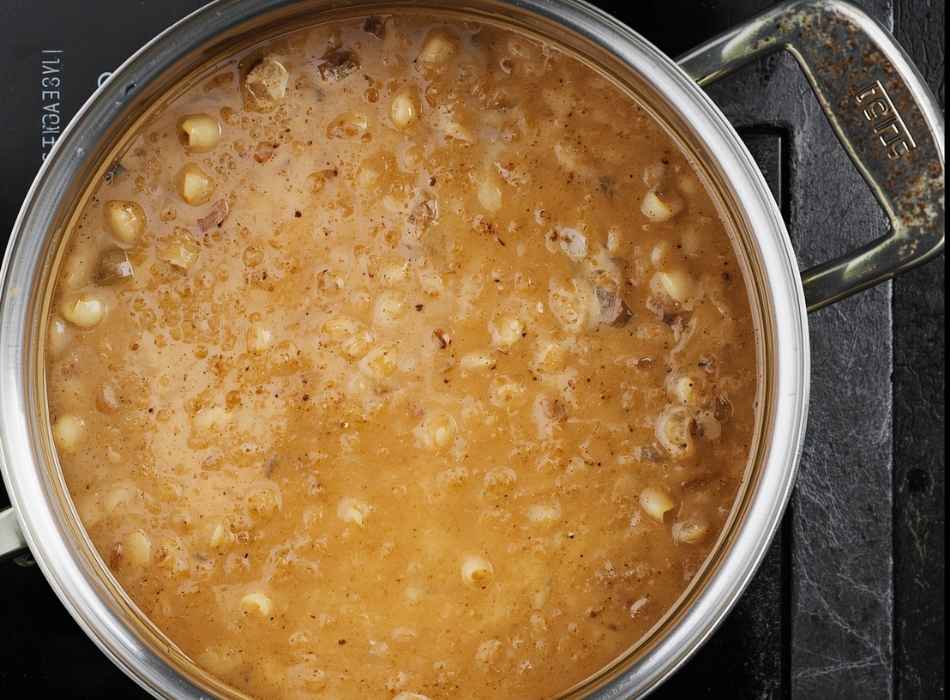
Temperature control makes the difference between smooth, creamy gravy and a lumpy disaster. Keep your heat at medium throughout the cooking process. High heat can cause the milk to curdle or the flour to burn, creating off-flavors and poor texture.
Whisking technique matters just as much as temperature. Use a flat whisk if you have one, and maintain constant motion when adding liquids. This prevents the flour from clumping and ensures even cooking throughout the mixture.
Strain your finished gravy through a fine-mesh sieve if you notice any small lumps. This extra step guarantees the silky smooth texture that makes restaurant gravy so appealing.
For make-ahead convenience, prepare the gravy up to two days in advance and store it in the refrigerator. Reheat gently over low heat, whisking in additional milk if needed to restore the proper consistency.
Common Mistakes and How to Avoid Them
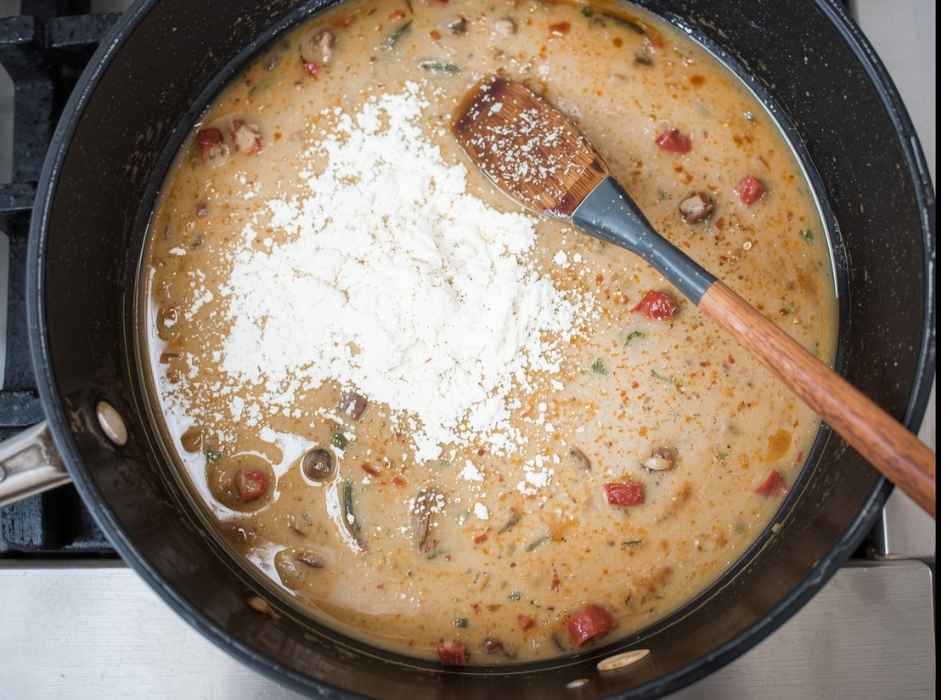
The most frequent error home cooks make is rushing the roux. Taking shortcuts here leads to gravy with a raw flour taste or poor thickening power. Give the flour and fat mixture adequate time to cook, even if it seems like nothing is happening.
Another common problem is adding cold milk to hot roux. This temperature shock often creates lumps that are difficult to smooth out. Let your milk come to room temperature, or warm it slightly in the microwave before adding it to the pan.
Overseasoning happens easily with this recipe because the flavors concentrate as the gravy cooks. Start with smaller amounts of seasonings and build up gradually. You can always add more, but you can’t take it back once it’s mixed in.
Serving Suggestions and Pairings
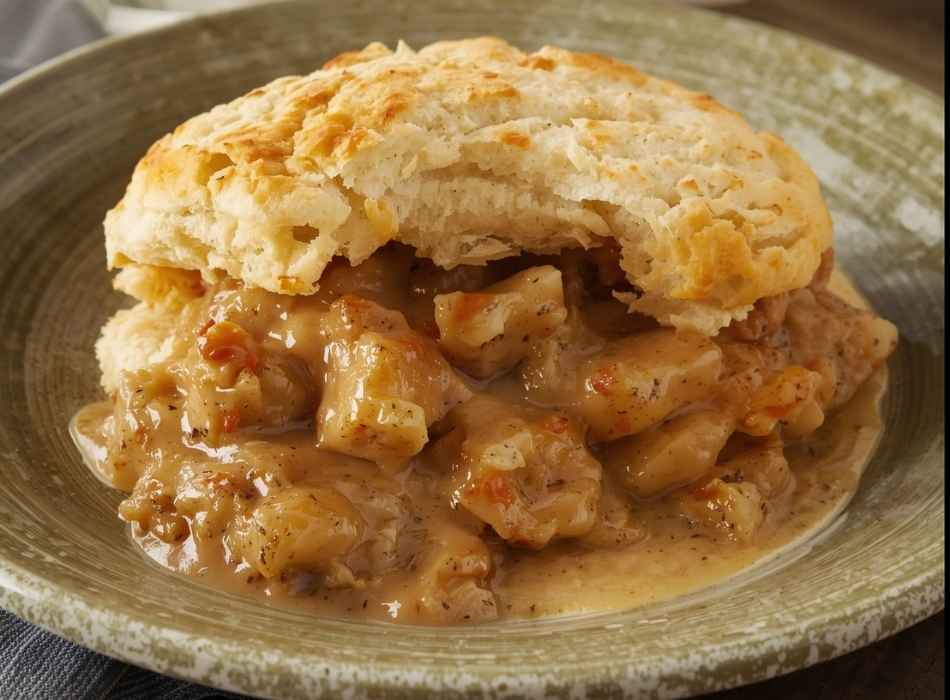
Popeye gravy shines brightest when served over warm, flaky buttermilk biscuits. The gravy soaks into the biscuit layers, creating the perfect bite of creamy, peppery goodness with tender bread.
This versatile sauce also complements fried chicken beautifully. Pour it over chicken and biscuits for a complete Southern-style meal, or use it as a dipping sauce for chicken tenders.
For breakfast applications, serve the gravy alongside scrambled eggs, hash browns, and crispy bacon. The rich flavors work particularly well with simple preparations that let the gravy take center stage.
Consider using leftover gravy as a base for chicken pot pie filling or as a sauce for comfort food casseroles. The Cajun-inspired seasonings add interesting depth to traditional recipes.
Bring Restaurant Quality Home
Making authentic Popeye gravy in your kitchen isn’t complicated, but it does require attention to technique and timing. The combination of proper roux preparation, careful seasoning, and quality ingredients creates a sauce that rivals any restaurant version.
Start with this base recipe and adjust the seasonings to match your family’s preferences. Some may prefer extra black pepper, while others might want a touch more cayenne for heat. The beauty of homemade gravy lies in customizing it perfectly for your taste.
Take your time with each step, especially the roux, and don’t be afraid to practice. Like any classic comfort food, great gravy improves with experience. Soon you’ll be serving up restaurant-quality results that have everyone asking for your secret recipe.


















